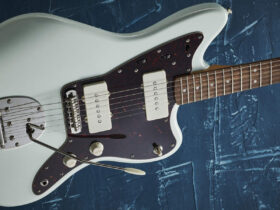What to look for in a Microphone a guide for singers Yes, the price of a microphone usually represents the nature of the sound it can reproduce. However, a little analysis will reveal that there are a plethora of low-cost microphones that are competent performers in many ways. Many of these models, in reality, copy the basic structures of microphones that cost tens of thousands of dollars. Understanding how different types of microphones function and what they’re designed for can help you improve your live performances and recording quality. What to Look for in a Microphone
This guide will cover the most important characteristics of the many different microphone styles and models to help you find the best mic for your budget and needs.
 What To Look For In A Microphone: A Guide For Singers
What To Look For In A Microphone: A Guide For Singers
When choosing a microphone, the most important question to ask yourself is how you want to use it. Will you use it to record vocals or to mic an instrument onstage? Is it designed for recording in a home studio? Or are you looking for something that can handle all scenarios? What to Look for in a Microphone
You’ll want to adapt the mic to the setting as well as the gear you’ll be using it with. Spending thousands of dollars on a Neumann studio mic, for example. Might not be justified if you just intend to use it to record simple demos in your bedroom studio. The acoustics will almost certainly be poor. So you’ll need to pair it with a high-end mic preamp, which will significantly increase your overall cost. As a result, a less sensitive and less expensive microphone may be a better option.
A variety of models will suffice if you’re looking for a single mic that can use in the studio as well as on stage. For example, the Shure SM57 is a popular, go-to mic that sees a lot of use in both situations.
Having a basic understanding of microphone requirements and terminology will aid you in selecting the right microphone for your needs. The following are the most common specifications and words used in mic descriptions:
The shape of a mic’s field of sensitivity. Or the direction from which it embraces or rejects incoming sounds is known as the polar pattern. An omnidirectional microphone picks up sounds from all sides. A bidirectional microphone, also known as a Figure 8 microphone. Picks up sounds from east and west, but not from north and south. A unidirectional microphone only picks up sounds coming from one direction and ignores sounds coming from other directions.
The most popular form of the microphone is the unidirectional, which comes in three polar patterns: cardioid, super-cardioid, and hypercardioid. Rear-axis and off-axis sounds coming from behind the mic or from the sides are rejected all three of these patterns.
Which are loose shapes like a heart (hence the name). Makes the mic most sensitive to sounds coming straight at it and from the side. But refuses sounds coming from 180 degrees in the opposite direction. What To Look For In A Microphone: A Guide For Singers in detail.
A 180-degree field accepts a little more sound from the super cardioid mic, but it rejects more from each hand. The hyper-cardioid allows even more sound to enter from 180 degrees but rejects more sound from 90 and 270 degrees.
When working in a noisy environment, such as when making a vocalist in a band, polar patterns are crucial. All sounds except the singer’s voice will exclude by cardioid, super cardioid. And hyper-cardioid microphones, preventing the signal from being muddied or producing feedback.
Multi-pattern microphones are available. In other words, they may shift their polar patterns. (For example, from omnidirectional to cardioid) with a switch or interchangeable capsules. This feature allows the mic to use in a variety of situations.
The frequency response of a microphone refers to the spectrum of frequencies it may pick up, from low to high. The lowest and highest frequencies, measures in hertz, are using to describe this range. For a vocal mic, a microphone with a frequency response range of about 80 Hz to 15 kHz would be a reasonable option. However, you’ll want a range that begins lower, about 50 Hz, for miking snares and toms. And a low end of 40 Hz or even lower, down to 30 Hz, for a bass drum mic.
It’s important to remember that frequency response only describes the mic’s total range of output. It’s how it performs at various frequencies that matter, and it’s how it performs that gives a mic its personality. What to Look for in a Microphone
The response curve of a microphone in the shape of its frequency responsiveness. As graphed, it takes the shape of a curve. Because it begins at zero on the low end and drops down to zero on the high end. There will be peaks and dips. This overall curve gives the mic a certain character and makes it more suited to certain application
The sensitivity of a microphone refers to how quiet a sound it can hear. And it can be demonstrated in a variety of ways. It’s probably enough to know that the lower the amount, the more sensitive the microphone is, regardless of the device.
The abbreviation SPL stands for “sound intensity level” and is measures in decibels (dB). It refers to the maximum volume that a microphone can accommodate, and is hence the polar opposite of sensitivity. This is important if the mic is going to use for noisy instruments like drums. A typical SPL is about 100 decibels, while a high SPL is 130 decibels.
Although the proximity effect is not defined, it is a significant mic characteristic that is sometimes described in descriptions.
As the sound source gets closer to the speaker, the proximity effect causes bass frequencies to become more prominent. Singers who “work the mic” to create effects would appreciate this. For close miking an instrument to bring out its bass tones. A recording engineer might choose a mic with a strong proximity effect.
Condenser microphones have a greater proximity effect than dynamic microphones. What To Look For In A Microphone: A Guide For Singers to increase live performance.
A microphone’s characteristics are more than just the features mentioned in its summary. The structure of the product, the metals used. And the precision with which it is manufactured can all have a significant impact on its performance.
As a result, it’s safe to assume that price is an important criterion. Keep in mind that the only way to tell. The difference between a good mic and a bad one is to listen.
 Microphone Types and Their Applications
Microphone Types and Their Applications
The majority of microphones fall into one of two categories. Dynamic microphones and condenser microphones, which vary in a variety of ways.
Dynamic microphones
Are usually more durable than condensers, making them better suited for on-stage use. Condensers, on the other hand, are more sensitive and fragile, which is why they’re so common in studios. However, these are generalizations; there are dynamic mics that are commonly used in recording environments. As well as condenser models that are engineered to withstand the rigors of stage work.
Most condensers need a battery or phantom power supply. (From a mixing board, preamp, or dedicated external power supply) to work, while dynamic mics do not.
Let’s take a closer look at the various microphone headsets for singings to see which one is better for your needs.
Microphones with a Dynamic Response
An inductive coil is attached to a diaphragm and positioned inside the field of a permanent magnet in dynamic microphones. The coil moves with the diaphragm, changing the voltage generated by the coil. The mic’s output is formed by these small changes in output voltage.
These mics are normally very tough and capable of handling high SPLs. Most have internal shock mounting so that they can be used with one side. And their polar patterns reject sounds that are off-axis. Many of these factors contribute to dynamic microphones’ ability to perform well in live sound environments. Though some are still used for recording. For several years, the Shure SM58 has been a studio and stage favorite.
Dynamic microphones are also relatively inexpensive as a group. And many of the big-name mic manufacturers have economy-series mics that provide excellent performance at a low price.
Ribbon microphones function similarly to other dynamic microphones, but instead of a diaphragm. They use a thin ribbon that vibrates to change the voltage. In the studio, ribbon microphones are used to capture voices and a variety of instruments. They add warmth to captured material by softening the voice. Royer Labs, Beyerdynamic, and AEA Microphones are some of the most well-known ribbon microphone manufacturers.
For more information, visit: bestrecheck.com/









